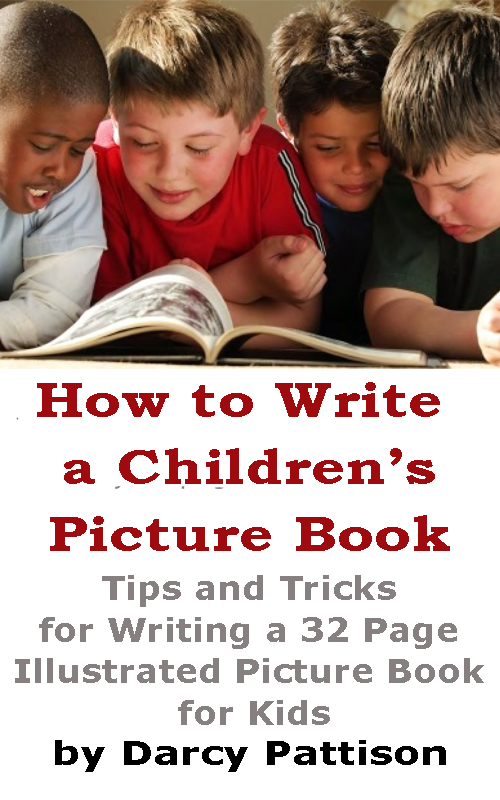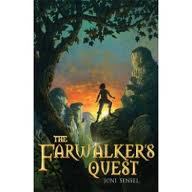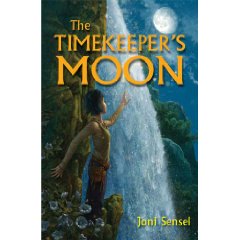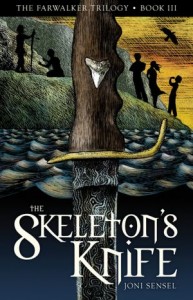new posts in all blogs
Viewing: Blog Posts Tagged with: Alternate Publishing, Most Recent at Top [Help]
Results 1 - 9 of 9
How to use this Page
You are viewing the most recent posts tagged with the words: Alternate Publishing in the JacketFlap blog reader. What is a tag? Think of a tag as a keyword or category label. Tags can both help you find posts on JacketFlap.com as well as provide an easy way for you to "remember" and classify posts for later recall. Try adding a tag yourself by clicking "Add a tag" below a post's header. Scroll down through the list of Recent Posts in the left column and click on a post title that sounds interesting. You can view all posts from a specific blog by clicking the Blog name in the right column, or you can click a 'More Posts from this Blog' link in any individual post.

By:
Darcy Pattison,
on 6/1/2015
Blog:
Darcy Pattison's Revision Notes
(
Login to Add to MyJacketFlap)
JacketFlap tags:
cover,
book marketing,
keywords,
metadata,
children's picture book,
self-publish,
categories,
checklist,
Alternate Publishing,
age levels,
Add a tag
Try Book 1 for Free
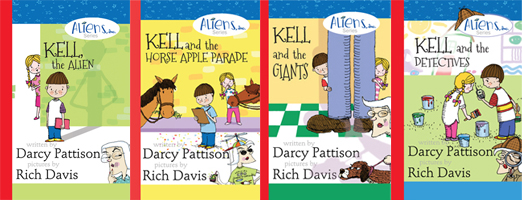
Assumption. I am assuming here that you’ve written a fantastic children’s picture book and the illustrations you’ve done or hired done are amazing. You’ve also assembled an amazing book using InDesign (recommended) or other software. This checklist takes up the process at the point where you have the files ready to upload. The checklist is useful whether you are producing a print book or an ebook, although some items may not apply in one or the other cases.
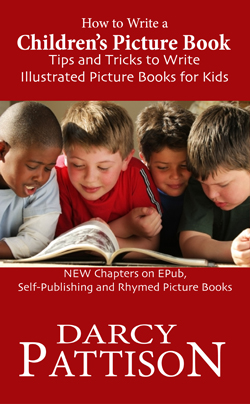
Double-Check the Book’s Production
Front Cover
Double-check spelling of everything.
Color reproduction of the art.
Back cover
Double-check spelling of everything.
Blurbs, quote or promo copy – do you have all the marketing material on the back cover that is needed? Any recent review quotes to add?
Copyright page
(Assumption: you want to sell this book to school libraries. If you only want to sell it as an ebook, then you only need to check the copyright date, since you probably won’t use an ISBN.)
Copyright date correct?
ISBN correct (if used)?
CIP correct? Are you using Publisher’s Cataloging-in-Publication data, which helps librarians catalog your book?
Interior
Check spelling, grammar and punctuation on every page.
Check position and reproduction of art on every page.
(Why are there 32 pages listed?)
- p. 1____Text _____Art
- p. 2-3____Text _____Art
- p. 4-5____Text _____Art
- p. 6-7____Text _____Art
- p. 8-9____Text _____Art
- p. 10-11____Text _____Art
- p. 12-13____Text _____Art
- p. 14-15____Text _____Art
- p. 16-17____Text _____Art
- p. 18-19____Text _____Art
- p. 20-21____Text _____Art
- p. 22-23____Text _____Art
- p. 24-25____Text _____Art
- p. 26-27____Text _____Art
- p. 28-29____Text _____Art
- p. 30-31____Text _____Art
- p. 32____Text _____Art
Marketing and Metadata Materials
Before you upload files, you’ll need your marketing material ready. I usually create a one-page Sell Sheet that includes the following information.
Exact Title:
Subtitle:
Series Name and Volume of this book:
ISBN, ASIN, and price for each format:
Description
The description is the time to hook your reader. The first 50 characters should give enough information to interest a reader in your book. Limited html is allowed on many platforms, so I often prepare two versions, one plain text and one marked up for html. For Kindle, you have 4000 characters–which is a lot. Use a word processor that counts the number of characters and use all of this valuable real estate.
Categories
Depending on the platform used, you may be asked to provide two or three categories. You can refer to the BISAC categories as a guidelines, but each platform may have its own quirks for this.
1.
2.
3.
Keywords
To help the book buyer find your book, most platforms allow you to insert from 5-7 keywords. You should have these ready; see Amazon’s advice on keywords.
1.
2.
3.
4.
5.
6.
7.
Age Levels
Often a platform will allow you to specify the age range for the book’s audience. Don’t try to cover every age (ages 1-15). Instead, choose a 3-4 year range. Typical ranges are ages 4-8, ages 5-8, ages 6-8, ages 8-12, ages 9-12, ages 12-15, and so on.
File Size
If you plan to publish the ebook on Kindle, you should know the file size. Full color children’s picture books are often 4-8 MGs of data. Because Kindle charges a delivery fee of $0.15 in the US, you’ll want to know this to decide on pricing.
Price for Different Formats
If you upload to multiple platforms, you’ll likely want to be sure to keep the data the same across them. It helps to write out your prices; be sure to update this data whenever you change it on one platform.
Cover Files
While I’m preparing marketing materials, I also like to create multiple versions of my cover files. I label them with the size and the resolution, so it’s easy to find later. Here are typical sizes I create for a square picture book cover, 8.5″ x 8.5″ It’s simple to create multiple files when the Photoshop program is already open, and saves me time later. Usually, I create jpeg files, but sometimes, I’ll repeat for .png files.
- Cover-2500×2500-300.jpg (This means the cover is 2500 px by 2500 px at 300 dpi.)
- Cover-2500×2500-150.jpg (This means the cover is 2500 px by 2500 px at 150 dpi. Some like to also prepare files at 96 dpi or 72 dpi for use on the web.)
- Cover-1000×1000-300.jpg
- Cover-1000×1000-150.jpg
- Cover-500×500-300.jpg
- Cover-500×500-150.jpg
- Cover-250×250-300.jpg
- Cover-250×250-150.jpg
With the Sell Sheet complete, and the books cover and interior files ready to go, it’s time to upload. Good luck with your book!

Now available!

Now available! NOW ON THE APPLE IBOOKSTORE! Kindle Paperback The Society of Children’s Bookwriters and Illustrators has recently announced the formation of a new award, the Spark Award, which is designed to recognize excellence in books published in a “non-traditional publishing route.” As the 2013 winner of the Writer’s Digest Self-Published award for children’s picture […]

START YOUR NOVEL
Six Winning Steps Toward a Compelling Opening Line, Scene and Chapter

- 29 Plot Templates
- 2 Essential Writing Skills
- 100 Examples of Opening Lines
- 7 Weak Openings to Avoid
- 4 Strong Openings to Use
- 3 Assignments to Get Unstuck
- 7 Problems to Resolve
The Math adds up to one thing: a publishable manuscript.
Download a sample chapter on your Kindle.
“I just want my novel out there.”
Ouch.
Too many times lately, I have heard people say this about their self-publishing efforts. Out there. I just want it out there. What does that even mean?
It means a couple things:
First, it means that the writer can find closure to his/her writing process. It means there is a finished product and the creative process has ended. Now, it’s up to everyone else to do whatever they will do with that product: ignore it, read it, praise it, trash it. But the writer can move on. There’s value in this, of course, to have something finished and not on the back burner, to have it stop nagging.
Second, the writer usually means that the story, novel, picture book, or nonfiction book will find readers. Here’s where the writer is wrong. The book will not find readers by itself. Guaranteed.
In their fascinating book, DECISIVE, Chip and Dan Heath talk about one flaw in the decision making process, namely, that people overestimate their own success and ignore solid data in front of them. In fact, most self-published books sell less than 100 copies. If your book is OUT THERE without any support, you will NOT sell copies. Your friends and family–because they love you–may buy copies, but that’s usually the 100 copies that get sold. Do not make this mistake (and how many ways and how strongly can I say this?), you will not sell copies if you do not market.
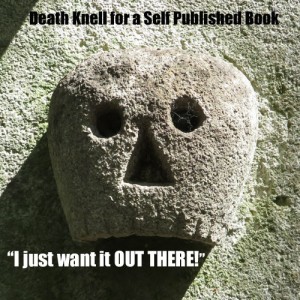
OUT THERE–publishing a book without marketing a book is not going to work.
Many of you will ignore this fact: you will convince yourself that your story is different and will beat the odds. OK. Do what you have to do. Put it OUT THERE. But it will not sell.
Unless.
A self-published book needs marketing. That means the publishing house (that’s you!) needs a platform, a network of connections that are proven places to sell a book. The author (that’s you!) needs to be working to support the publisher (Oh, that’s you, too!) to sell the book. This can be accomplished through any number of means: catalogs, speaking engagements and back of the room sales (BOTR), online venues, guest blogging, schools, special sales to corporations, gift shops, and on and on. The venues for sales of books are endless. But you must focus somewhere and work to get your book into those venues.
OUT THERE? You want your book out there? Get it out of your head by doing a small printing and giving copies to friends and family as Christmas gifts. But if you really want it OUT THERE in the world wide market place, get ready to work.
Instead, you should be saying, “I want to work hard to get my story into the hands of the right readers.” Now THAT is a worthy goal of self-publishing.


By:
Darcy Pattison,
on 12/21/2012
Blog:
Darcy Pattison's Revision Notes
(
Login to Add to MyJacketFlap)
JacketFlap tags:
young adult,
romance,
American Idol,
macmillan,
Swoon,
new imprint,
Alternate Publishing,
YA,
publisher,
Add a tag
In a recent PW announcement, Macmillan Children’s Books has announced the creation of a new YA Romance imprint. The switch? It will be a sort of American Idol for YA Romance Writers.
Romance writers, are you ready for this?
Crowdsourcing, or drawing on participation from the audience for decisions, will be the major focus of the new imprint. Audience will consider chapters and vote on their favorite. When a manuscript is finally chose, they’ll vote on book covers.
The editor’s role?
The imprint’s editors will not screen the submitted manuscripts, but will monitor the content to make sure that “nothing obscene happens” in the novels. Romance fans reading the manuscripts online will be able to provide comments and offer a rating, the highest of which is five hearts – or “swoon-worthy.”
 The imprint will be under the leadership of the ever-innovative Jean Feiwel, senior v-p and publisher of Feiwel and Friends, Square Fish, and now Swoon Reads. She has collected wide support throughout Macmillan and this will be an imprint to watch.
The imprint will be under the leadership of the ever-innovative Jean Feiwel, senior v-p and publisher of Feiwel and Friends, Square Fish, and now Swoon Reads. She has collected wide support throughout Macmillan and this will be an imprint to watch.
Do you have a manuscript that is Swoon-Worthy?
Polish it up! Read the early offerings from SRYA and look for announcements of submission guidelines.


By:
Darcy Pattison,
on 3/2/2012
Blog:
Darcy Pattison's Revision Notes
(
Login to Add to MyJacketFlap)
JacketFlap tags:
illustrator,
children's book,
tiny,
indie,
niche,
Rich Davis,
Alternate Publishing,
pick and draw,
teach art,
teach drawing,
Add a tag
Continuing the series about Alternate Publishing. This is part 5 of 7.
Alternate Publishing Series TOC
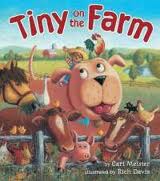 Rich Davis is an illustrator extraordinaire, with a generous heart and amazing talent. After being laid off from years as a greeting card illustrator, he went freelance. He has illustrated a series of books for Viking and uses those drawing skills to pull kids into the art world. And in the end, he’s publishing his own education resource book, too. Read Rich’s blog chronicling his one year journey in making his next children’s book for Viking is at creatingtinybook.blogspot.com
Rich Davis is an illustrator extraordinaire, with a generous heart and amazing talent. After being laid off from years as a greeting card illustrator, he went freelance. He has illustrated a series of books for Viking and uses those drawing skills to pull kids into the art world. And in the end, he’s publishing his own education resource book, too. Read Rich’s blog chronicling his one year journey in making his next children’s book for Viking is at creatingtinybook.blogspot.com
My Alternative Route to Alternative Publishing
Guest Post by Children’s Book illustrator, Rich Davis
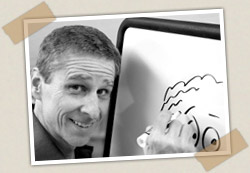 Three years ago, I ventured out into the self employment arena. It was not planned, it happened unexpectantly. One of the ways I wanted to try and earn money was through doing presentations for children at libraries and schools since I am a children’s book illustrator. I had drawn with kids quite a bit before this time and I had
Three years ago, I ventured out into the self employment arena. It was not planned, it happened unexpectantly. One of the ways I wanted to try and earn money was through doing presentations for children at libraries and schools since I am a children’s book illustrator. I had drawn with kids quite a bit before this time and I had
seen firsthand that kids like a game….
cartoons…
and drawing.
I combined these three ingredients into one and invented a simple drawing game called Pick and Draw (if you go to pickanddraw.com, you can actually try it online to see how it works).
But I didn’t invent it to take into the market place, I invented it to use for my own presentations in libraries and schools. I didn’t know if it would work. At the first library that I used it, I was floored by the response of the kids (very excited and loved it…wanted more). I had made a large prototype deck and it was the only one there was. I did not know what I had and even excused the success of that first trial as a “fluke”…a good day. But when I tried it at the next place, it happened again…but with an even better response. And people began asking me where they could get it.
I had come from a creative background where I had been a “draw

By:
Darcy Pattison,
on 3/2/2012
Blog:
Darcy Pattison's Revision Notes
(
Login to Add to MyJacketFlap)
JacketFlap tags:
publishing,
ebooks,
self,
how to,
publish,
indie,
arthur slade,
niche,
Alternate Publishing,
Add a tag
Arthur Slade, Canada’s premier writer of young adult fantastical fiction, won the prestigious Governor General’s Award (Canada’s equivalent of the Newbery), the Mr. Christie’s Award, and has had books on the American Library Association Best Books for Young Adults and has been a finalist for the Edgar Award (Mystery Writers of America). Last year, he reisued his backlist as ebooks and reports on the results here: A glorious year of ebooking – Learn how he sold 6353 EBooks!.
Drawing upon that experience, Art gives tips today about taking the same route.
This is part of the continuing series on Alternate Publishing:
Alternate Publishing Series TOC
5 Tips for Ebooks
Guest post by Arthur Slade
If you’re looking at self publishing your own work on Kindle or Kobo, or B&N or…well on any of those retailers here are 5 handy tips.

- Don’t be afraid. The world of epublishing is confusing. There are mobis, and epubs, and html and pdfs and… If you’re not into figuring out how to turn your book into these various formats then look for a formatting service. They’ll do it for you and you don’t have to sweat.
- Diversify. Amazon is the largest seller of ebooks, but it’s usually best to take the time to distribute your work to as many different retailers as possible. This allows you to reach a bigger audience. There’s nothing more frustrating for a reader with a Nook to find out that you’re only available on Amazon. And you never know, you may become a hit on one of the other retailers.
- Make sure your work is perfect. Yep, that should be a given. I’m assuming you’ve already rewritten it thirty times or so. Even the tiniest typos may upset a reader and give you a dreaded 1 star rating. So be sure your work is without typos and the gobbledygook that can spring up when text is converted to epublishing files. To do this it’s good to read your own work on a Kindle or your favourite device (an iPad is handy because you can use all of the various readers on one device).
- Put a professional cover on your book. You are entering the professional world and
Continuing the series about Alternate Publishing. This is 4 of 8.
Alternate Publishing Series TOC
uTales: Digital Picture Book Publishing Goes Global
Guest Post by Jean Helprin Diehl
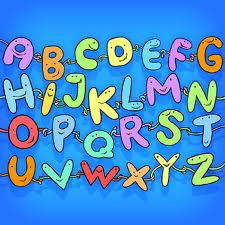 In December 2010, my good friend Kathryn Freeman received an invite out of the blue to publish digital picture books through a new site, uTales.com. Nils von Heijne, the company’s creator, liked what he’d seen of her paintings and illustrations online. He included a code for logging on to the Beta version of uTales to check it out, plus three additional invites for colleagues. Katie and I are longtime collaborators, so she sent one to me.
In December 2010, my good friend Kathryn Freeman received an invite out of the blue to publish digital picture books through a new site, uTales.com. Nils von Heijne, the company’s creator, liked what he’d seen of her paintings and illustrations online. He included a code for logging on to the Beta version of uTales to check it out, plus three additional invites for colleagues. Katie and I are longtime collaborators, so she sent one to me.
Why not, we decided. We resurrected a project we’d always loved, which had garnered interest from publishers but no contract. By November 2011 we’d published this title, a href=”http://utales.com/books/palomas-pie”>Paloma’s Pie
, and started work on an interactive book we created just for uTales,
What Color is Fred The start-up venture we’d never heard of before had launched as an Apple app for iPad, iPhone and PC, and a respected editor from the world of traditional children’s book publishing, Emma Dryden, had joined the company to provide editorial oversight and approve books for publication. uTales customers could subscribe or purchase single titles from a library of more than 150 books – a number now nearer 200 – the work of writers and illustrators from around the globe.
See the Books on UTales:
(Note that the following links are to book previews of the first 8 pages – it’s impossible to access entire books without purchasing them:)
There are plenty of apps available for children’s books these days. uTales appears to have distinguished itself in at least three ways, so far.
- First, its international focus and its plans to publish books in multiple languages; English came first, Swedish is next (Nils is Swedish and the company has offices in Sweden and New York).
- Second, uTales’ software enables authors and illustrators to collaborate remotely on a manuscript from anywhere on the globe that has an Internet connection.
- Finally, one of the compa

By:
Darcy Pattison,
on 2/29/2012
Blog:
Darcy Pattison's Revision Notes
(
Login to Add to MyJacketFlap)
JacketFlap tags:
publishing,
historical fiction,
bock,
self,
chris,
indie,
niche,
how to publish a book,
kris,
Alternate Publishing,
eboch,
Add a tag
Continuing the series about Alternate Publishing. This is part 3 of 7.
Dodging Trends: Why I Turned to Self-Publishing
Guest Post by Chris Eboch
“If a book is good enough, it will find a home.” I’ve heard that a lot in the publishing industry, especially from editors and agents.
There’s just one problem. It’s not true.
After 15 years in this business, 12 traditionally published books, and years as a teacher through the Institute of Children’s Literature, writing organizations, and local colleges, I think I’m a pretty good judge of quality. And yet I’ve seen too many great manuscripts fail to sell. Maybe some authors just need to keep trying, but when multiple published authors say, “I can’t believe her novel hasn’t sold yet,” you have to acknowledge that the publishing business judges by standards other than quality.
That’s not to say you can sell a terrible book. Rather, a manuscript has to be great AND trendy, or at least something editors and marketing departments predict will sell enough copies to make money for the company. When vampires were selling big, publishers released more vampire books.
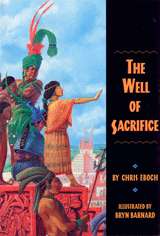 I happen to like historical fiction. My first middle grade novel, The Well of Sacrifice (Clarion Books), came out in 1999. It’s an adventure set in ninth-century Mayan Guatemala, and because many schools teach the Maya in fourth grade, it’s still in print and I get a nice royalty check twice a year.
I happen to like historical fiction. My first middle grade novel, The Well of Sacrifice (Clarion Books), came out in 1999. It’s an adventure set in ninth-century Mayan Guatemala, and because many schools teach the Maya in fourth grade, it’s still in print and I get a nice royalty check twice a year.
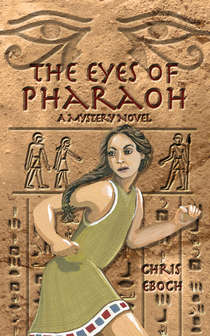 A few years ago, I wrote a mystery set in ancient Egypt. The Eyes of Pharaoh is better written than The Well of Sacrifice, since I’ve become a better writer. Yet wherever I sent it, I got one of two responses – “Historical fiction isn’t selling well these days” or “We already have an Egypt book.”
A few years ago, I wrote a mystery set in ancient Egypt. The Eyes of Pharaoh is better written than The Well of Sacrifice, since I’ve become a better writer. Yet wherever I sent it, I got one of two responses – “Historical fiction isn’t selling well these days” or “We already have an Egypt book.”
I do know writers who have sold historical fiction more recently—mainly literary novels set in America in the last 200 years. And a couple of young adult novels have touched on ancient Egypt (well, at least on Cleopatra, who isn’t all that ancient by Egyptian standards). But despite great feedback on my story, despite teachers telling me they wanted the book for their classroom, despite the l

By:
Darcy Pattison,
on 2/27/2012
Blog:
Darcy Pattison's Revision Notes
(
Login to Add to MyJacketFlap)
JacketFlap tags:
create space,
Alternate Publishing,
alternate,
author,
series,
publish,
Joni Sensel,
self-publish,
case study,
Add a tag
Alternate publishing has been a quiet, behind-the-scenes subject for the last two or three years, but I keep hearing people talking about how they’ve taken the plunge. The terms vary: self-publishing, indie publishing, niche publishing. Some authors are apologetic; some are arrogant; some are business-like. But more and more, people are taking their copyright into their own hands and asking: how can I make money with what I have written. This week, we’ll look at seven stories of people who have done exactly that. For every story told here, I probably know of two or three more similar stories.
Dusting off an old publisher’s hat
Guest post by Joni Sensel
My latest book starts with a mouse-gnawed, bedraggled hat, and I found myself donning an old hat myself to get this book to readers who were asking for it.
More than ten years ago, I started a small press and self-published two picture books. One earned an award, both sold out their print runs, and I got a terrific crash-course in publishing — enough to know I’d rather write. I stuffed my publishing hat into a closet.
After four traditionally published middle-grade novels, however, I dusted off my DIY cap. Having published THE FARWALKER’S QUEST and its sequel (which were contracted individually), Bloomsbury didn’t even want to consider the trilogy’s finale. Though the books earned good reviews and even a little award notice, sufficient copies didn’t sell for the company to invest in the third.
Farwalker’s Quest was a 2009 Cybil Award finalist and a 2010 Bank Street College ‘Best Book’.
REVIEWS
- This is a solid and well-paced fantasy in which the journey is more important than the conclusion. The theme of finding and accepting one’s true calling resonates. –School Library Journal
- [T]he book is at once elegant and lyrical, while also offering an intensely paced and action-driven plot for readers who are seeking adventure along with poetic contemplation.
–The Bulletin of the Center for Children’s Books
- This stand-alone fantasy has a unique setting with an intriguing history and a suspenseful plot. –Booklist
- The story offers crisp dialogue, an exciting plot, and strong secondary characters. –Kirkus
Yet readers were asking for more. So I finished it myself.
I did







